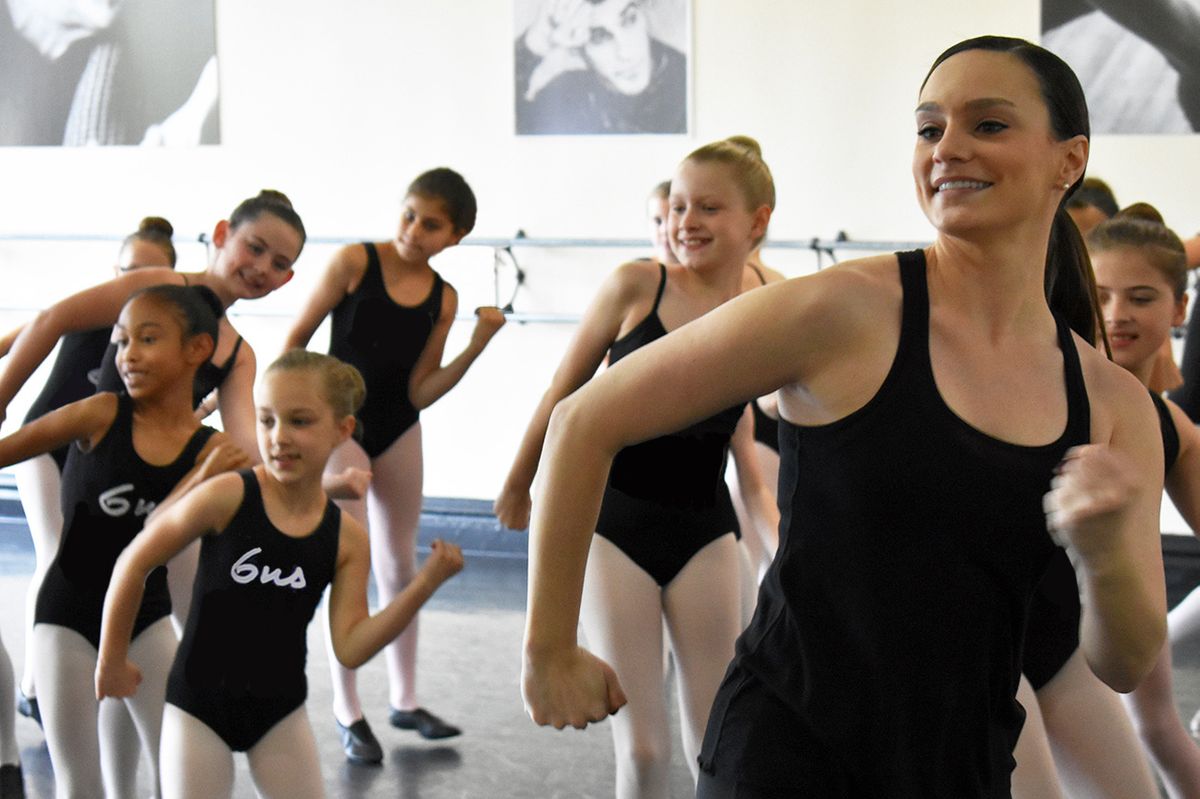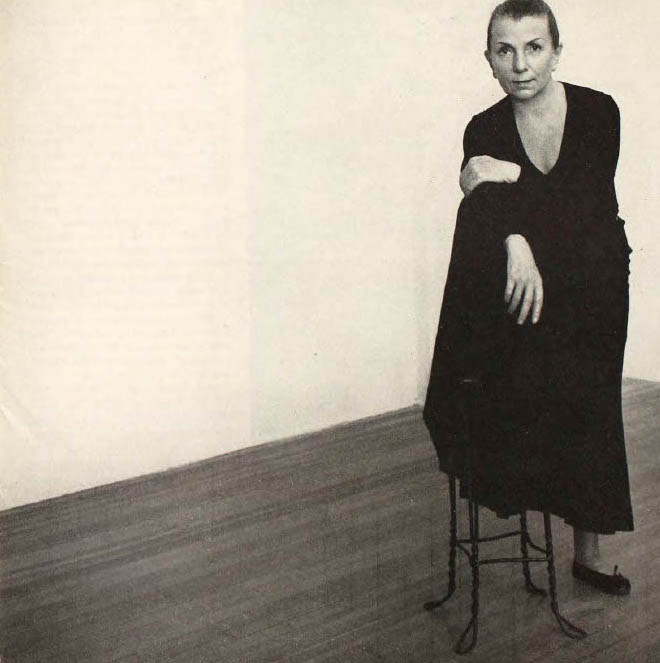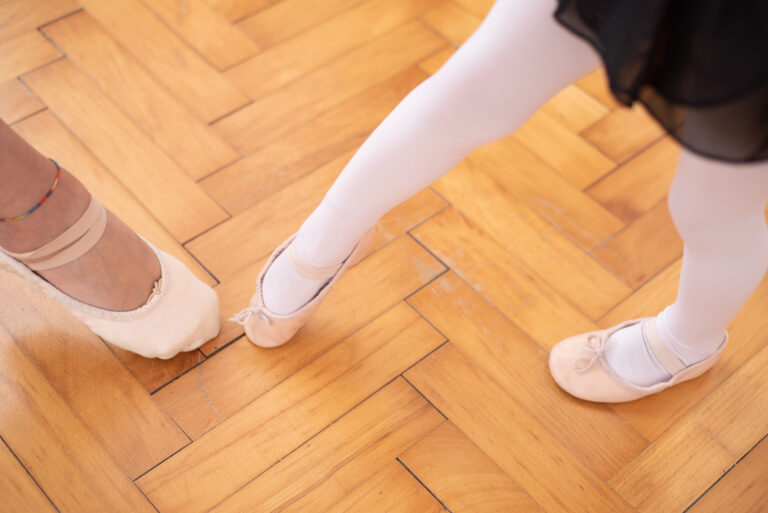
Teen jazz class at Chicago’s Gus Giordano Dance School, under the direction of Amy Giordano, has a wide range of students. “Some just started dancing a month ago, and others have been dancing for three years,” says Nicole Belanger, dance education director. To maintain a positive environment, Belanger pairs older kids with less experienced ones. “It builds a bond,” she says. “Then they’re all open to taking corrections and working toward their goals, rather than comparing themselves to the next person.”
Teaching a mixed-level class isn’t ideal, but sometimes a shortage of space or faculty prompts consolidation. Workshops and open recreational classes may also attract diverse groups in terms of age, level and ability. If the class moves too slowly, advanced dancers might lose interest. If it progresses too quickly, the beginners feel lost. Structuring a multilevel class can be a challenge, but there are some surprising advantages if you manage it right.
Communicate
Set the tone at the beginning of class. “If a teacher takes the initiative to make the atmosphere positive and encouraging, the kids will usually follow,” says Belanger. She makes an announcement after attendance, reminding students that everyone will be working on something different. “Our main goal is to build confidence and make the environment welcoming and open to all,” she says. “I remind them that it’s all about improving themselves and not worrying about others.”
If you recognize students’ progress and abilities throughout class, you’re more likely to keep them engaged. “They feel good when the teacher thinks they’re ready for more,” says Kristan Ballard, owner of Texas Academy of Dance Arts. She might suggest that more experienced dancers do an extra pirouette or add a jump at the end of a progression. “It’s important that the top level doesn’t feel held back by students who aren’t as advanced,” she says. The lower levels will get excited if you promise that they’ll tackle a new step the following week.
Encourage Teamwork
With a few standout dancers in a multilevel class, it might be tempting to use them as good examples, all the time. But that can cause others to feel intimidated and self-conscious. The less advanced dancers might be reluctant to step forward and try something new. “I prefer to make general, sweeping comments and corrections so that no one feels singled out,” says Belanger. She groups her class into twos or threes to prevent anyone from feeling vulnerable.
Belanger’s buddy system pairs more mature dancers with younger ones to develop mentor/mentee relationships. “The older ones are helpers, even though they’re still learning,” she says. “Then they don’t feel put down even though they’re mixed with younger students.” Ballard might have a second teacher to provide additional support, or invite advanced students to assist with the lower level [see sidebar]. “It’s magical how much better they get, themselves, when they’re instructing others,” she says.
Offer Alternate Versions
When groups within a mixed-level class are separated by more than just subtle differences, give variations of a step or combination. Rachel Chew, ballet mistress and director at California Academy of Performing Arts, will have some students do an advanced version of a combination in center while keeping others at the barre longer. “I break it down for them and make it less overwhelming,” she says. “They also don’t feel left out, and I don’t have to slow down the rest of the class too much.”
Belanger might also focus on one movement, like a six-step preparation for pirouette, and divide her class into groups based on experience. Dancers new to the movement work on a simple balance in passé so she can check their alignment. The ones who have already practiced the preparation might start working on single or double turns. “Everyone is moving at the same pace across the floor and still working at their individual levels,” she says.
Know When to Hold Back—or Push Forward
Sometimes you might have students with focus issues combined with students who are progressing at a faster rate. Chew sees greater variances in mental, emotional, physical and social development with her minis and juniors. “Sometimes I’ll pull the class back because I see the majority is struggling,” she says. “Other times, the entire class moves forward because there are more kids who can keep up.” If some haven’t mastered a step but have a good understanding of the fundamentals, she lets them try to move ahead with the group.
In the summer, Chew experiences more mixed-level classes because students have the opportunity to start changing levels or taking more classes. “Dancers have been on vacation and others have been doing intensives, so I have to assess each class as it happens,” she says. “I don’t have a foolproof plan, but I try to stay adaptable.”
Be sure to make the structure diverse enough in skill level to accommodate all students. “Approach the class so everyone is encouraged but also pushed appropriately,” says Belanger. “No one wants to feel defeated or in over their head.”




